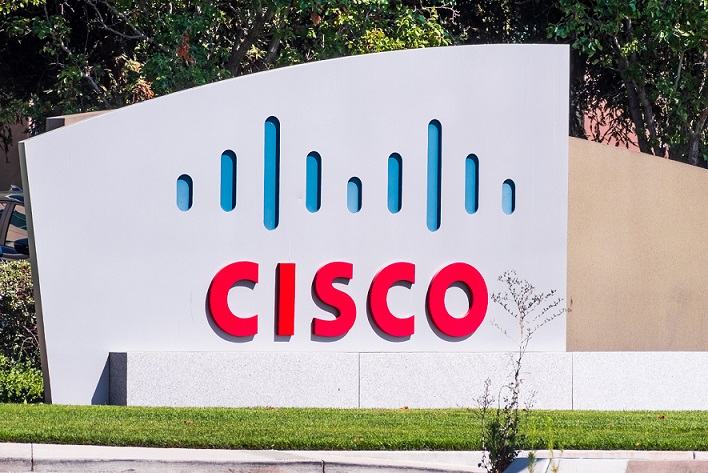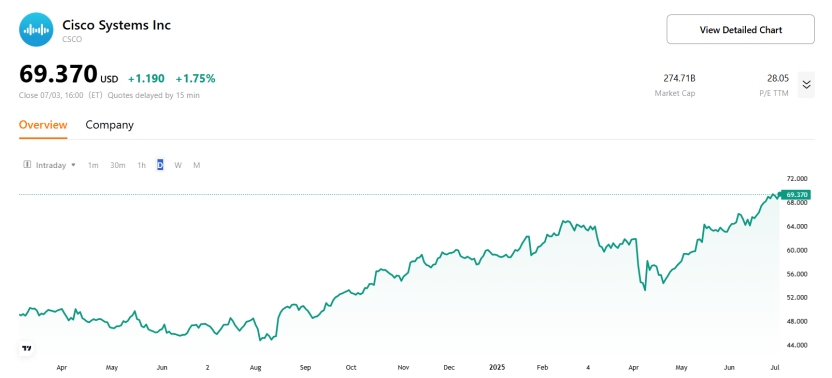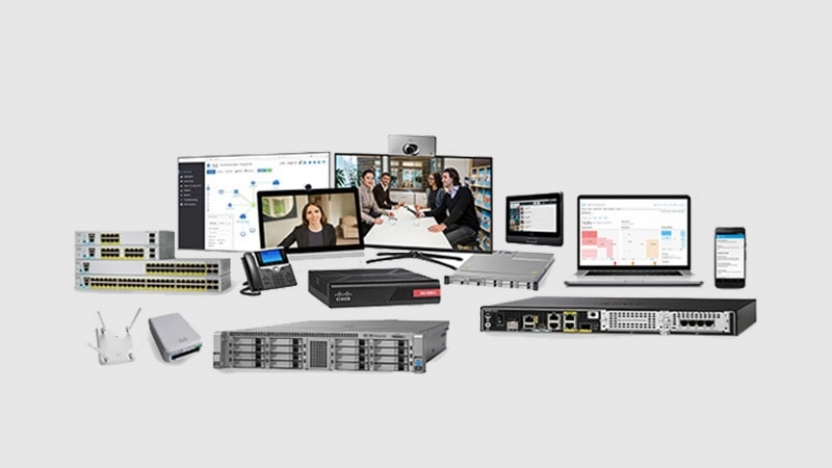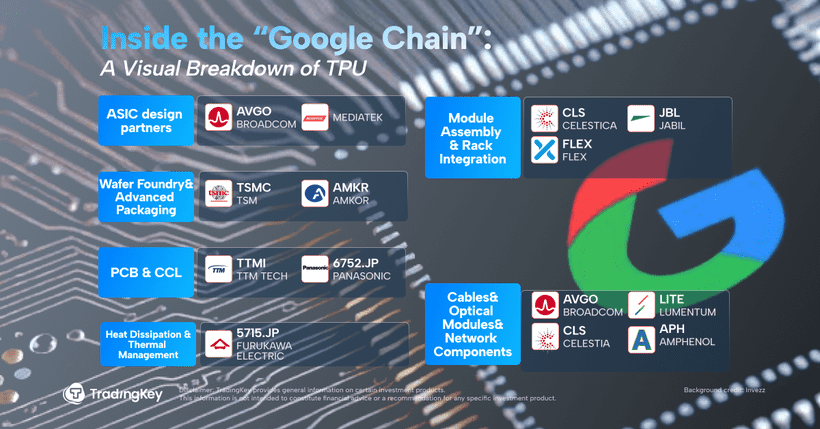Unlocking Cisco’s Future: The Rise of Software, Services, and AI Infrastructure


Investment Thesis
Cisco Systems (NASDAQ: CSCO) is at a pivotal stage, evolving from a dominant networking hardware leader into a software- and AI-driven company, accelerated by its $28 billion Splunk acquisition in early 2024. This strategic shift boosts recurring software and subscription revenues, helping Cisco adapt to competitive pressures from Asian rivals. The company’s strong market position, extensive product ecosystem, and deep customer relationships provide a durable moat, while growth in AI infrastructure and cloud-enabling solutions positions Cisco well for future expansion.
Financially, Cisco reported solid Q3 FY2025 results with 11% revenue growth and 25% software revenue increase, maintaining a 3.5% dividend yield amid rising debt from acquisitions. Using a discounted cash flow model, Cisco’s fair value is estimated to be between $84 and $105 per share.

Source: TradingKey
Financials — Quarterly Highlights (Q3 FY2025)
Cisco’s Q3 fiscal 2025 results demonstrate solid growth and ongoing transformation, supported by strong software and subscription momentum despite margin pressures and increased leverage.
· Revenue Growth: Cisco’s total revenue increased by 11% YoY to $14.1 billion, driven primarily by a 15% rise in product revenue.
· Software and Subscriptions: Software revenue grew sharply by 25%, with subscription revenue up 15%, reflecting the positive impact of Splunk acquisition.
· Earnings: EPS improved to $0.62 from $0.46 in the prior year’s quarter.
· Margins: Product gross margins improved slightly from 63.7% last quarter to 64.4%, despite ongoing pricing pressures and higher amortization costs. Meanwhile, Services gross margins declined marginally from 68.9% to 68.7%, primarily due to increased employee-related expenses.
· Dividend & Buyback: Cisco maintains a strong capital return policy, with a dividend yield of around 3.5% and nearly $5.8 billion spent on buybacks in FY2024.
· Debt: Long-term debt rose to $25.1 billion to finance the Splunk acquisition, but liquidity remains solid with $5 billion in unused revolving credit and a current ratio of 0.95, indicating manageable short-term liquidity.
Company Overview
Cisco Systems, founded in 1984, grew rapidly to become the world’s highest valued company during the dot-com bubble, symbolizing the internet’s rise. Cisco is known for building the essential equipment that makes the internet work. Its main strength is in networking hardware, especially its Catalyst switches used in office and campus networks, and its Nexus switches designed for data centers. Besides, Cisco’s evolution extends beyond hardware. It embeds software into devices and aggressively promotes subscription offerings such as Cisco DNA, which adds automation, analytics, and security features to networks.

Source: Cisco
A unique aspect of Cisco’s culture is its encouragement of entrepreneurial initiatives within the company, often acquiring successful internal startups, which fuels innovation and growth. The company’s global reach is supported by a hybrid sales model combining direct sales to large strategic accounts and a vast ecosystem of channel partners, including systems integrators and resellers, crucial for worldwide distribution.
Competitor Analysis
Cisco operates across multiple sectors: networking hardware, software/security, collaboration, and services, each with distinct competitive dynamics.
In networking hardware, Cisco is the clear global leader, commanding roughly 77% of the market share in computer networking equipment such as routers and switches. This dominant position is supported by its extensive product portfolio, strong brand reputation, and deep customer relationships. Cisco’s proprietary operating system (IOS) and integrated software capabilities further differentiate it from competitors. Major rivals include Huawei, which is especially strong in Asia and emerging markets due to aggressive pricing and expanding offerings, as well as Juniper Networks and Arista Networks, which focus on high-performance data center switching.
In the software and security space, Cisco is rapidly expanding, particularly following its acquisition of Splunk in 2024. This deal significantly enhanced Cisco’s capabilities in data analytics, security, and observability, enabling it to compete more effectively with specialized cybersecurity firms like Palo Alto Networks and Fortinet. Cisco’s ability to integrate hardware, software, and services into comprehensive solutions gives it a competitive edge over companies offering point products.
Cisco’s collaboration solutions, including WebEx, hold a solid position in the unified communications market, although they face stiff competition from cloud-native platforms such as Slack, Microsoft Teams, and Zoom. While Cisco’s market share in collaboration software is smaller compared to its hardware dominance, its offerings benefit from integration with its broader networking and security portfolio.
The Services segment is a significant contributor to Cisco’s revenue, providing technical support, consulting, and managed services globally. Cisco’s scale and global reach allow it to deliver outcome-focused services that differentiate it from smaller competitors like IBM and local systems integrators.
One concern for Cisco is that Cloud companies like AWS, Microsoft Azure, and Google Cloud have changed the way businesses use technology by offering flexible, on-demand computing and storage services. Because of this, many companies are moving their IT systems to the cloud instead of keeping them on their own hardware. This shift has reduced some of the demand for Cisco’s traditional networking equipment. However, Cisco is not just losing business to these cloud giants. Instead, it is changing its focus by growing its software, subscription services, and cloud-related products. Cisco now provides tools that help businesses connect securely to multiple clouds and manage hybrid environments that combine cloud and on-premises systems. Products like SD-WAN and secure access service edge (SASE) help customers improve cloud connectivity and security. By adapting this way, Cisco aims to benefit from the rise of cloud technology rather than being left behind.
Overall, Cisco’s competitive advantages stem from its scale, integrated product and service offerings, substantial R&D investment, and strong customer relationships. These strengths help it maintain market leadership despite pricing pressures and the rise of disruptive white box hardware providers offering lower-cost, generic alternatives.
Revenue Breakdown
Cisco’s revenue mix reflects its ongoing strategic shift from primarily hardware sales toward a more balanced portfolio of software, subscriptions, and services. The Products accounts for 73% of the total revenue. In products, approximately 50% of total revenue still comes from networking hardware, which remains the backbone of its business but faces margin pressure from competition and commoditization. Security and collaboration each contribute about 14% and 7% respectively, with steady growth driven by increasing enterprise demand for secure, unified communications. Observability (2% of total revenue) is Cisco’s fastest-growing segment, with revenue increasing around 24% year-over-year in Q3 FY2025, driven by strong demand for AI-powered analytics and monitoring solutions.
.jpg)
Source: Cisco, TradingKey
Services account for roughly 27% of revenue, providing stable, recurring income through support and advisory offerings. Although services revenue grew modestly by about 3% year-over-year in Q3 FY2025, it remains a key contributor to Cisco’s predictable cash flow and customer retention amid the company’s broader shift toward software and subscription-based product offerings.
.jpg)
Source: Cisco, TradingKey
This evolution from a hardware-centric business toward a diversified mix of software, subscriptions, and services aligns with broader industry trends favoring cloud adoption, automation, and AI-enabled networking. It positions Cisco for sustainable long-term growth and supports an improved valuation outlook.
Geographically, the Americas represent the largest revenue share, 59%, followed by EMEA (25%) and Asia-Pacific (14%). The Asia-Pacific region is a key growth market but also the most competitive, with strong local players like Huawei challenging Cisco’s dominance.
.jpg)
Source: Cisco, TradingKey
Growth Potential
Cisco’s growth strategy today is focused on evolving beyond its traditional hardware business by embracing AI, software subscriptions, and services. This shift is essential as the technology landscape rapidly changes, with customers demanding smarter, more automated, and secure networks.
A key milestone in this transformation is Cisco’s acquisition of Splunk in March 2024. Splunk is a leading software platform that helps organizations analyze massive amounts of data generated by their IT systems and networks. By integrating Splunk’s advanced data analytics, security, and observability capabilities, Cisco has significantly expanded its software portfolio. This acquisition has already driven a sharp increase in Cisco’s software and subscription revenues.
Beyond acquisitions, Cisco is heavily investing in AI infrastructure, building the high-performance networking equipment and software needed to support AI applications. For example, in the first half of fiscal 2025, Cisco secured over $700 million in AI infrastructure orders, with expectations to surpass $1 billion by year-end. These investments position Cisco as a critical partner for enterprises and cloud providers preparing their networks for the AI era. Cisco’s partnerships with industry leaders like NVIDIA, Microsoft, and sovereign AI projects further strengthen its role in this emerging market.
.jpg)
Source: Cisco
Internally, Cisco is also embedding AI tools within its own operations to improve efficiency and service delivery. This dual approach: selling AI-powered solutions to customers while using AI to optimize its own business, demonstrates Cisco’s commitment to innovation and operational excellence.
Valuation
Using a discounted cash flow (DCF) approach, Cisco’s fair value range is estimated to be between $84.42 and $104.83 per share. This valuation reflects a balance between the company’s stable cash flows from mature hardware and services businesses and the growth potential from software subscriptions and AI investments.
The increased debt load from the Splunk acquisition weighs on leverage ratios but is offset by expected long-term revenue growth and margin expansion as software and subscription revenues scale. Cisco’s consistent capital return policy through dividends and share buybacks supports shareholder value.
Risks
Cisco faces key risks including intense competition from lower-cost Asian players and white-box providers, integration challenges and amortization costs from the Splunk acquisition, potential inventory write-downs due to supply chain disruptions, and the need to carefully manage its shift from legacy hardware to software and AI-driven solutions to protect revenue and margins.







